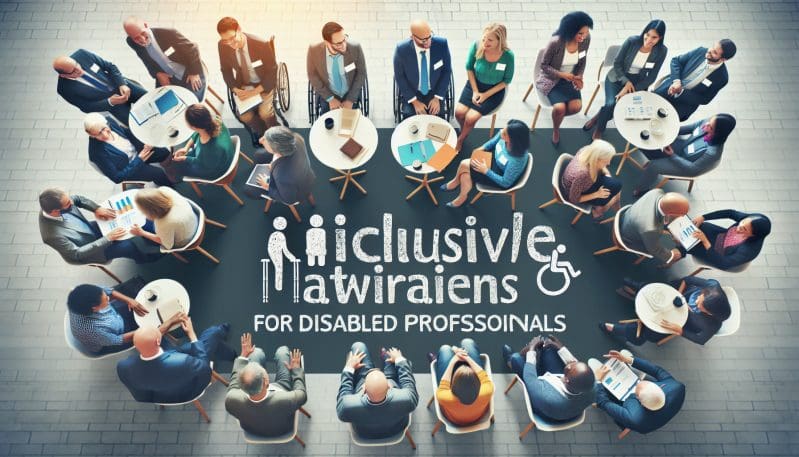Inclusive Networking: Breaking Down Barriers for Disabled Professionals
- Home
- Inclusive Networking: Breaking Down Barriers for Disabled Professionals

- Deeksha Joshi
- February 1, 2024
- 0 Comments
It’s no secret that networking is a vital cornerstone in building a successful professional career. The connections formed can lead to mentorships, partnerships, and opportunities that might otherwise be inaccessible. However, for many disabled professionals, traditional networking events are fraught with challenges, often creating an inequitable playing field that can impede their career advancement. The goal of inclusive networking is not just to open doors, but also to ensure that once inside, disabled professionals find a space that is conducive to forming meaningful connections.
For companies and event organizers, revolutionizing networking to be inclusive is not just a moral imperative but also a smart business strategy. Diverse perspectives drive innovation, and by creating environments where disabled professionals can participate fully, organizations can tap into a wider pool of talent. ‘No Worker Left Behind’ is poised to lead this transformation, advocating for a future where work, worker, and workplace are in sync with the principles of inclusivity and diversity.
Transformative inclusive networking initiatives often begin with a simple step: listening. By engaging with disabled professionals and disability advocacy groups, organizations can gain valuable insights into the specific barriers that need addressing. Whether it’s physical accessibility, communication support, or adaptive technology, understanding these needs is the first step in crafting effective solutions.
Technology plays a crucial role in leveling the networking field. Virtual platforms have the potential to eliminate many physical barriers, but they must be designed with accessibility in mind. Features like captioning, sign language interpretation, and screen reader compatibility are essential, but so too are less obvious details like user-friendly navigation and adequate time for interaction.
Success stories, such as CareerACCESS, initiated by the World Institute on Disability, provide blueprints for what effective inclusive networking can look like. Their programs not only facilitate connections between disabled professionals and employers but also offer coaching and advocacy that equip individuals with the tools to navigate the professional world confidently.
‘No Worker Left Behind’ can spearhead such initiatives by not only advocating for change but also by demonstrating it. Hosting inclusive networking events, developing partnerships with like-minded organizations, and sharing resources are tangible ways to make an impact. Furthermore, they can champion policies that encourage businesses to prioritize inclusivity in their own networking events and workplace culture.
In order to foster disability-friendly networking environments, organizations must take actionable steps. These can include providing training for staff on disability awareness, ensuring event venues are accessible, offering alternative formats for sharing information, and using technology to bridge gaps. Moreover, a feedback loop is critical; after each event, gathering insights from attendees with disabilities can help refine the approach to inclusivity.
In summary, the potential impact of truly inclusive networking for disabled professionals cannot be overstated. By eliminating barriers and creating spaces where everyone can connect and engage on an equal footing, ‘No Worker Left Behind’ can help to usher in a new era of networking that celebrates and capitalizes on the diversity of the workforce. It’s time to reimagine networking as a tool for empowerment, and No Worker Left Behind stands at the forefront of this essential endeavor.

Leave A Comment